Animal Farm Vs. The Godfather
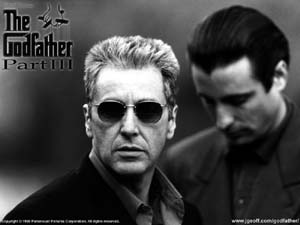
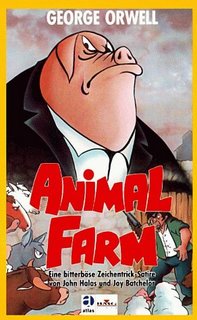
Animal Farm vs. “The Godfather” George Orwell and Mario Puzo wrote Animal Farm and “The Godfather” (from the book The Godfather), respectively, to express their disillusionment with society and human nature. Animal Farm, written in 1944, is a book that tells the animal fable of a farm in which the farm animals revolt against their human masters. It is an example of social criticism in literature in which Orwell satirized the events in Russia after the Bolshevik Revolution. He anthropomorphizes the animals, and eludes each one to a counter part in Russian history. The movie “The Godfather”, directed by Francis Ford Coppula, also typifies this kind of literature. Besides the central theme of mob life, is another prevalent theme, that of a revolution gone bad. He shows us that, unfortunately, human nature causes us to be vengeful and, for some of us, overly ambitious. Both of these works are similar in that both describe how, even with the best of intentions, our ambitions get the best of us. Both of the authors also demonstrate that violence and the Machiavellian attitude of “the ends justifying the means” are deplorable. George Orwell wrote Animal Farm, “… to discredit the Soviet system by showing its inhumanity and its back-sliding from ideals [he] valued…” (Gardner, 106) Orwell noted, “there exists in England almost no literature of disillusionment with the Soviet Union.’ Instead, that country is viewed either with ignorant disapproval’ or with uncritical admiration.’” (Orwell, 10) The other animals take this utopian idea to heart, and one day actually do revolt and drive the humans out. Two pigs emerge as leaders: Napoleon and Snowball. They constantly argued, but one day, due to a difference over plans to build a windmill, Napoleon exiled Snowball. Almost immediately, Napoleon established a totalitarian government. Soon, the pigs began to get special favors, until finally, they were indistinguishable from humans to the other animals. Immediately the reader can begin to draw parallels between the book’s characters and the government in 1914-1944 Russia. For example, Old Major, who invented the idea of “animalism,” is seen as representing Karl Marx, the creator of communism. Snowball represents Trotksy, a Russian leader after the revolution. He was driven out by Napoleon, who represents Stalin, the most powerful figure in the country. Napoleon then proceeded to remove the freedoms of the animals, and established a dictatorship, under the public veil of “animalism.” Pigs represent the ruling class because of their stereotype: dirty animals with insatiable appetites. Boxer, the overworked, incredibly strong, dumb horse represents the 2 of 4 common worker in Russia. The two surrounding farms represent two of the countries on the global stage with Russia at the time, Germany and England. Orwell begins his book by criticizing the capitalists and ruling elite, who are represented in Animal Farm by Mr. Jones, the farmer. He is shown as a negligent drunk, who constantly starved his animals. “His character is already established as self-indulgent and uncaring.” (King, 8) Orwell shows us how, “if only animals became aware of their strength, we should have no power over them, and that men exploit animals in much the same way as the rich exploit the proletariat.” (Gardner, 97) What was established in Russia after the Bolshevik Revolution was not true communism (“animalism”), which Orwell approved of, where the people owned all the factories and land. Rather, “state communism” was established, where a central government owned them. Orwell thought that such a political system, “state communism,” was open to exploitation by its leaders. Napoleon, after gaining complete control, did anything he wished – reserved the best for the pigs, and treated the other animals cruelly. The animals could not do anything, unless they again realized their strength in numbers against their own kind. Unfortunately, they were too stupid to realize this and accepted the “status quo.” It began when the milk and apples were appropriated to the pigs, and continued to when the pigs could drink and sleep on beds, until finally the pigs were the “human masters” to the rest of the animals. Orwell criticized Germany, representing it as Pinchfield Farm, which betrayed Animal Farm by paying for lumber with counterfeit money. In real life, this represents the Soviet-Germany non-aggression pact during World War II that Germany eventually broke. Eventually, towards the end of the story, the term, “absolute power corrupts absolutely,” is proven, as the pigs, which retained all the privileges for themselves, have evolved into a different caste from the other animals. Orwell’s implication is that “real” communism cannot exist in the countries, which claim to be communist. The ruling class – politicians – owns everything and ironically is therefore in total control. “The Godfather” chronicles the lives of Vito Corleone, a Sicilian who renounced his friendship with senor Selotso by not befriending him in a drug business proposal, and Michael Corleone, a son of Vito. Both of these characters headed the family’s affairs in crime. After Selotso had Vito shot, and almost killed, in the streets, Michael avenged his father’s injuries by killing Selotso and Police Captain 3 of 4 McClupski. With this war going on, family business is in a dangerous position of losing power and becoming outcast by the five families. The family risks its political and police backing if they are not able to pay them off, and when the Kids are running the business they make hasty decisions that go against what the Don believes of justice, he says, “that is not justice, your daughter is still alive.” (“The Godfather”, 1972) Instead the Vito’s kids act irrationally and kill all that may not be on the side of their family when no deaths have occurred. People’s lives were deemed inferior and insignificant, as illustrated when Paulie was killed, Pete said, “leave the gun, but grab the canoles.” (“The Godfather”, 1972) Michael stepped out of his life as a college student studying to be a politician to become a killer when his time was needed to step out of his safe position out of the muscle part of the business. Michael risked his freedom in America and said, “… if you can find a way to plant a gun then I will kill them both.” (“The Godfather”, 1972) The Cause of the war in New York was the decision to hold a meeting with Solotso and already know that the godfather does not want to get involved with drugs. His son Sonny that will be the next leader gets his opinion in the decision and wants to get a share of the drug profits. Declining Solotso is rude by the godfather and does not respect the man enough to understand his greed. Solotso tried to kill the godfather so that he could get his business deal with the Corleone family and convinces Tom (the council) to stop Sonny from coming after him and make the deal go through, “Sonny was hot for my idea and you knew it was the right thing to do…its good business Tom.” (“The Godfather”) Animal Farm and “The Godfather” were written to express their authors’ disenchantment with the state of evolution of human nature. They seem to be saying that even when we begin with honorable intentions, there will be some of us who will let their base instincts take control. Orwell, in Animal Farm portrays this nature by parodying events in real history. Given the right conditions, those events could happen anywhere- a leader becoming overly ambitious, to the point of harming his people for more power. In “The Godfather”, Coppola examines the hearts of the family to find what they can decide what is more important – business or personal – and how people are driven to the valley of human emotions, where desperation and anger reign. Every human being is capable of becoming a ruthless, opportunistic being like Napoleon or Sonny, if given the right opportunity.
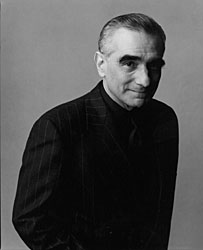
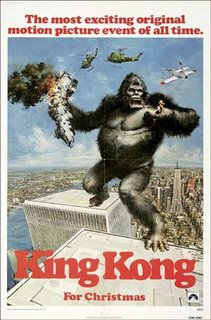


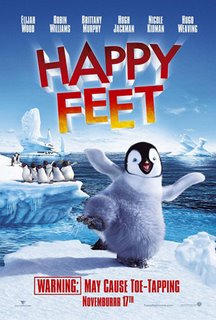 Both films are opening wide on November 17th. But Hollywood couldn't be pitting two more different films against each other. I'm told the early tracking has just shown up for James Bond vs. The Birds -- and they're running neck-and-neck in their box office race. The good news for both pics is that .007 and the penguins have "the highest awareness of any movie this far out since the summer films," one of my box office gurus told me this morning. The tracking shows that Sony/MGM's Casino Royale has a huge male and teen advantage, while Warner Bros.' Happy Feet has the big leg up with Moms and families. Like, duh. The kiddie flick will have a screen advantage: an estimated 3,700 theaters compared to an estimated 3,400 theaters for the spy. Then again, Casino Royale's adult tickets are full price. On the one hand, the Bond franchise has a built-in audience; on the other, there's a new .007 (Daniel Craig) with a Bourne-like look that doesn't depend on the gee-whiz gadgetry of yesteryear, and that may put off Bond fans. As for the flock, their CGI film clearly exploits the humongous success of Warner Independent's Oscar-winning pick-up March of the Penguins; on the other hand, not every animated pic does well at the box office these days. (Remember that Warner's summer bomb Ant Bully?) With Saw III coming out this weekend, and Santa Clause 3 looking to best both Borat and Flushed Away when the trio go head to head Nov. 3rd, and Russell Crowe's A Good Year competing against Will Farrell's Stranger Than Fiction Nov. 10th, all these movies better get out of the way for the big Bond vs Birds showdown. This is gonna get more and more interesting...
Both films are opening wide on November 17th. But Hollywood couldn't be pitting two more different films against each other. I'm told the early tracking has just shown up for James Bond vs. The Birds -- and they're running neck-and-neck in their box office race. The good news for both pics is that .007 and the penguins have "the highest awareness of any movie this far out since the summer films," one of my box office gurus told me this morning. The tracking shows that Sony/MGM's Casino Royale has a huge male and teen advantage, while Warner Bros.' Happy Feet has the big leg up with Moms and families. Like, duh. The kiddie flick will have a screen advantage: an estimated 3,700 theaters compared to an estimated 3,400 theaters for the spy. Then again, Casino Royale's adult tickets are full price. On the one hand, the Bond franchise has a built-in audience; on the other, there's a new .007 (Daniel Craig) with a Bourne-like look that doesn't depend on the gee-whiz gadgetry of yesteryear, and that may put off Bond fans. As for the flock, their CGI film clearly exploits the humongous success of Warner Independent's Oscar-winning pick-up March of the Penguins; on the other hand, not every animated pic does well at the box office these days. (Remember that Warner's summer bomb Ant Bully?) With Saw III coming out this weekend, and Santa Clause 3 looking to best both Borat and Flushed Away when the trio go head to head Nov. 3rd, and Russell Crowe's A Good Year competing against Will Farrell's Stranger Than Fiction Nov. 10th, all these movies better get out of the way for the big Bond vs Birds showdown. This is gonna get more and more interesting...